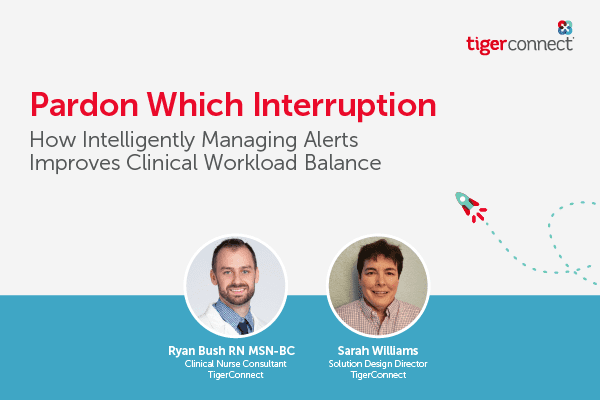Home / Blog /
How Healthcare Leaders Can Tackle Nursing Staffing Shortages

How Healthcare Leaders Can Tackle Nursing Staffing Shortages
Despite the pandemic’s effects beginning to wane for some, nurses in America are still feeling its effects. The healthcare industry faced nursing staffing shortages even before the pandemic. Since then, burnout, exhaustion, fatigue, and declining mental health have become increasingly prevalent.
Nursing staffing shortages are caused by several factors. These include rising labor costs, an aging population, increased demand for healthcare services, and a limited supply of trained nurses. The United States now faces a deficit of 200,000 to 450,000 registered nurses available for direct patient care by 2025. This represents a 10 to 20% gap that places greater demand on nurses over the next two years.
The nurse staffing shortage is creating the next inevitable epidemic – an insufficient number of nurses to meet the healthcare needs of patients in hospitals, clinics, nursing homes, and other healthcare settings. Nursing staffing shortages can negatively affect patient care, including longer wait times and increased risk of medical errors. They can also place a more significant burden on nurses as the nature of work is stress-inducing and often emotionally challenging, leading to burnout and high turnover rates.
To determine a solution to the problem, let’s first look at what’s causing the staffing challenges.
Reduce Nurse Interruptions: Intelligently Managing Alerts & Alarms
|
 |
An aging population and retiring nurses
Compounding the reality that the nursing workforce is aging, many nurses choose to retire early or leave the profession due to high-stress levels and burnout from high patient-to-nurse ratios, lack of support from management, and exposure to traumatic events such as patient deaths. This burnout leaves many nurses with physical and emotional health problems, including depression, anxiety, and chronic illness. Therefore, many are making the tough decision to leave the industry permanently.
Lack of support and resources
The lack of support and resources for nurses is a significant issue in the healthcare industry. It’s obvious the critical role nurses play in patient care. However, a survey conducted by the American Nurses Foundation found that more than half of nurses surveyed reported feeling burnout, and almost 70% said their workplaces did not provide enough resources to support their mental health and well-being, indicating the critical need for more resources to support nurses in their demanding roles. By ensuring they are proactively equipped with the best tools to do their job, healthcare organizations can better enable them to provide the best possible care. These tools can include items such as personal protective equipment (PPE), medical equipment, medication, and advanced communication tools.
Difficult working conditions and increasing stress levels
One of the main challenges nurses face is the high workload and brutally long shifts, which can have significant implications for their well-being and patient care quality. For example, nurses may be required to work overtime, night shifts, and weekends, which can lead to fatigue, burnout, and decreased job satisfaction. Additionally, nurses may face high patient volumes, making it challenging to provide individualized care and attention to each patient.
Nurses are the foundation of the healthcare system, yet they face an increasingly difficult job in today’s work environment. Below are a few frequently asked questions regarding the nursing staffing shortage.
How can healthcare organizations leverage technology to combat nursing staffing shortages?
To combat this growing crisis, healthcare organizations must invest in clinical communication and collaboration platforms to optimize communication between nurses, providers, and other healthcare professionals. These advanced platforms have a significant impact on nurse job satisfaction. Nurses can use communication platforms to enhance communication between healthcare professionals and providers. Automating routine tasks increases efficiency and accuracy. Unified messaging solutions improve clinical workflow processes, providing better support for care teams.
TigerConnect provides a suite of solutions designed to empower nurses and other healthcare professionals by streamlining communication, automating processes, and increasing the quality of patient care. The technology helps organizations reduce costs, improve patient outcomes, and boost job satisfaction for nurses by enabling secure messaging, advanced patient monitoring tools, and providing real-time alerts.
What other approaches should healthcare organizations consider?
Beyond technology, healthcare organizations are also investing in staff development initiatives such as self-care, resilience training, mentor programs, and recognition programs. Providing wellness resources and stronger team relations can also improve communication and organizational alignment. In addition, many have implemented flexible scheduling policies that encourage long-term commitment while also allowing experienced workers to maintain a healthy work-life balance.
The U.S. will need more than 203,000 new registered nurses annually through 2026 to fill the gap in care left by a retiring workforce – a concerning number amid this drawn-out nursing shortage. Fortunately, several innovative technologies are available to assist nurses as they look to the future. As the nursing shortage continues, innovative technology like clinical communication and collaboration platforms can benefit nurses by helping to streamline communication, optimize clinical workflows, and improve care delivery. To learn more about how TigerConnect can improve nursing workflows and alleviate burnout, watch the webinar.
Cheryl McKay, PhD, RN, Nurse Executive Accountable Care
Dr. Cheryl McKay is a healthcare leader with over 20 years of executive experience in directing quality care for large academic facilities, smaller multi-site inpatient and outpatient centers, as well as research, quality, education, and clinical divisions. As a critical care clinical specialist, nurse executive, and researcher, she has a broad range of experience in helping clients successfully manage technology implementation and advancement, product development, marketing, and sales.
Tags: Staffing shortages, nursing workforce, nursing shortage








